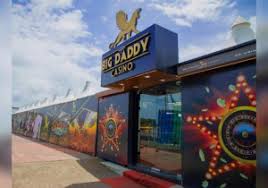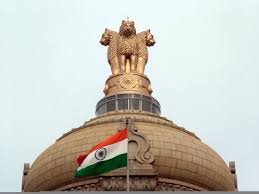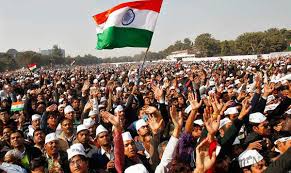
Indian Politics
Introduction: The Grand Tapestry of Indian Democracy
This News was Written and Sponsored by Agen Slot
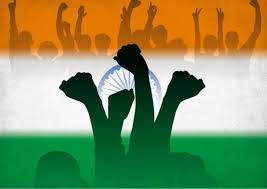
Indian politics is a vast, complex, and often bewildering spectacle, a vibrant reflection of the nation’s immense diversity and deep-seated aspirations. As the world’s largest democracy, with an electorate of nearly a billion people, the political process in India is a monumental exercise in logistics, identity, and ideology. The political landscape is a dynamic arena where ancient traditions collide with modern ambitions, where regional aspirations negotiate with national imperatives, and where the very definition of the nation is constantly debated and redefined. Understanding Indian politics requires more than just an analysis of parties and elections; it demands an appreciation of its historical context, its sociological fabric, and the economic forces that shape its trajectory. The sheer scale and intensity of Indian politics make it a unique and fascinating subject of study for anyone interested in global affairs. This article aims to unravel the many threads that constitute the intricate fabric of the political system in this South Asian giant. From its foundational principles to its contemporary challenges, we will explore what makes Indian politics so resilient, yet so contentious.
The journey of Indian democracy since independence in 1947 is a story of remarkable endurance. Unlike many post-colonial states that succumbed to military rule or single-party dominance, India has maintained a robust, if often chaotic, democratic framework. The Constitution of India, a visionary document, established a sovereign, socialist, secular, and democratic republic, laying the groundwork for a political system based on universal adult franchise. This commitment to electoral democracy has been the bedrock upon which the edifice of Indian politics has been built. Every five years, the world watches in awe as India conducts general elections, a carnival of democracy that involves millions of polling stations, political parties, and a cacophony of campaign rhetoric. The core of Indian politics lies in this unwavering faith in the ballot box, a mechanism through which the common citizen exercises ultimate power. This electoral process is the engine that drives the entire political machinery, making the study of Indian politics fundamentally a study of its people’s will.
However, the landscape of Indian politics is not monolithic. It is a multi-layered structure operating at the national, state, and local levels, each with its own distinct dynamics and power centers. The interplay between these levels adds another layer of complexity to the political process. Furthermore, the system has evolved significantly over the decades, moving from the one-party dominance of the Indian National Congress to an era of unstable coalitions, and now to a phase where a single party, the Bharatiya Janata Party (BJP), has achieved a formidable majority. This evolution reflects the changing aspirations of the Indian electorate and the shifting sands of social and ideological alignments. To fully grasp the currents of Indian politics, one must delve into its key institutions, major political parties, ideological battles, and the socio-economic factors that influence voter behavior. The following sections will provide a detailed exploration of these critical components, offering a comprehensive overview of the forces that shape the world’s largest democracy.
The Constitutional Pillars of Indian Governance
The framework of Indian politics is meticulously defined by its Constitution, which is the supreme law of the land. Adopted in 1950, it establishes India as a parliamentary democratic republic, drawing inspiration from various global models but adapting them to the country’s unique conditions. The Constitution mandates a federal structure with a strong unitary bias, meaning that while power is distributed between the central government and the states, the centre holds significant authority, especially during emergencies. This balance of power is a constant source of negotiation and conflict in Indian politics, often pitting state governments against the central government. The three pillars of the Indian state—the Legislature, the Executive, and the Judiciary—are designed to function on a system of checks and balances, ensuring that no single institution becomes too powerful. This constitutional design has been crucial in sustaining democratic Indian politics through numerous challenges.
The Legislature, or Parliament, is the cornerstone of the democratic process in Indian politics. It is bicameral, consisting of the Lok Sabha (House of the People) and the Rajya Sabha (Council of States). The Lok Sabha is the directly elected lower house, where the party or coalition with a majority forms the government. The Prime Minister, the head of the government, is drawn from this house. The Rajya Sabha represents the states and is a permanent body not subject to dissolution. The legislative process often involves intricate negotiations between the two houses, reflecting the federal nature of Indian politics. The Executive branch comprises the President, the nominal head of state, and the Council of Ministers headed by the Prime Minister, who wields the real executive power. The Prime Minister’s Office (PMO) has become an increasingly powerful institution in contemporary Indian politics, centralizing decision-making and policy implementation.
The Judiciary, with the Supreme Court at its apex, acts as the guardian of the Constitution and the final arbiter in legal disputes. The Indian judiciary has played a profoundly active role in shaping Indian politics through its power of judicial review. It has expanded its remit through Public Interest Litigation (PIL), making it accessible to the marginalized and allowing the courts to intervene in a wide range of issues, from environmental protection to corruption scandals. This “judicial activism” has often brought the judiciary into confrontation with the executive and legislature, highlighting the dynamic and sometimes tense interplay between the pillars of the state. The independence of the judiciary is a fiercely defended principle in Indian politics, seen as a vital safeguard for democracy and fundamental rights. Together, these three pillars uphold the constitutional order that governs the complex dance of Indian politics.
The Evolution of the Party System in India
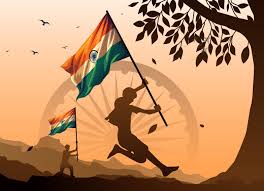
The party system in Indian politics has undergone a dramatic transformation since independence. For the first two decades, the Indian National Congress dominated the political scene, a period often described as the “Congress System.” As the party that led the freedom struggle, the Congress enjoyed immense legitimacy and was a broad umbrella organization encompassing diverse ideologies and social groups. Under the leadership of Jawaharlal Nehru, the first Prime Minister, the Congress established a centrist, secular, and socialist-oriented platform that set the tone for early Indian politics. However, the death of Nehru and later his daughter, Indira Gandhi, marked the beginning of the end of this one-party dominance. The Congress split in 1969, and Indira Gandhi’s centralization of power and the declaration of the Emergency in 1975 were watershed moments that eroded its democratic credentials and triggered the rise of opposition forces.
The 1980s and 1990s marked the era of the “coalition era” in Indian politics. With no single party able to secure a majority in the Lok Sabha, governments were formed through alliances of multiple regional and national parties. This period saw the rise of powerful regional parties that championed the interests of specific states, castes, or linguistic groups. The Mandal Commission’s implementation, which reserved government jobs for Other Backward Classes (OBCs), and the Babri Masjid demolition in 1992 were pivotal events that reshaped the social and political landscape. This era made coalition-building and consensus the central art of Indian politics. Prime Ministers like H.D. Deve Gowda and I.K. Gujral led fragile United Front governments, dependent on the support of parties from the left and right. The National Democratic Alliance (NDA) led by the BJP and the United Progressive Alliance (UPA) led by the Congress became the two main pre-poll coalitions, defining government formation for over two decades.
The contemporary phase of Indian politics is characterized by the resurgence of a single-party majority, with the Bharatiya Janata Party (BJP) under Prime Minister Narendra Modi securing decisive victories in the 2014 and 2019 general elections. This marks a significant shift from the coalition politics of the previous era. The BJP’s success is built on a powerful combination of Hindu nationalist ideology, a charismatic leadership cult, a sophisticated electoral machine, and a campaign focused on development and national security. The Congress, on the other hand, has seen a dramatic decline, struggling to define a compelling narrative against the BJP’s hegemony. This has led to a period of BJP dominance in Indian politics, though the party still relies on its NDA allies for a broader reach in certain states. The current party system is thus a curious mix of national-level dominance and persistent state-level fragmentation, where regional parties continue to hold sway in their respective bastions, ensuring that the federal spirit remains a vital aspect of Indian politics.
The Central Role of the Bharatiya Janata Party (BJP)
The Bharatiya Janata Party has emerged as the most formidable political force in contemporary Indian politics. Its rise from a marginal player with just two parliamentary seats in 1984 to the party that commands a massive majority today is a story of ideological persistence and strategic electoral planning. The BJP is the political arm of the larger family of organizations known as the Sangh Parivar, led by the Rashtriya Swayamsevak Sangh (RSS), a right-wing, Hindu nationalist volunteer organization. The core ideology of the BJP is “Hindutva” or cultural nationalism, which posits that India is fundamentally a Hindu nation, and its culture and identity should reflect this majority character. This ideology represents a fundamental challenge to the secular, pluralistic consensus that had underpinned Indian politics for decades, making the BJP a deeply transformative and polarizing force.
Under the leadership of Prime Minister Narendra Modi, the BJP has perfected a winning electoral formula. Modi’s persona as a strong, decisive leader committed to development and national pride resonates with a large section of the electorate. The party’s campaign machinery is unparalleled, leveraging technology, data analytics, and a massive cadre base to connect with voters at the grassroots level. Key planks of the BJP’s platform in recent elections have been national security, exemplified by its response to cross-border terrorism; economic development, with flagship schemes like ‘Make in India’ and direct benefit transfers; and a push for cultural reassertion, seen in policies like the abrogation of Article 370 in Kashmir and the construction of the Ram Temple in Ayodhya. This combination of nationalism, development, and ideology has proven to be a potent mix in the arena of Indian politics.
The BJP’s dominance has significantly altered the tenor and texture of Indian politics. It has shifted the political discourse decisively to the right, forcing other parties, including the Congress, to recalibrate their positions on issues of nationalism and identity. The party’s success has also led to a centralization of power and a presidential-style of campaigning, where state elections are often fought in the name of the national leader. However, the BJP’s hegemonic position also faces challenges, including economic distress, agrarian unrest, and the need to manage the aspirations of its diverse social coalition. The party’s ability to navigate these challenges will determine its future trajectory and, by extension, the future direction of Indian politics. The BJP’s role is therefore not just that of a ruling party, but that of an ideological force seeking to redefine the very soul of the nation.
The Indian National Congress: From Dominance to Decline
For a major part of India’s post-independence history, the Indian National Congress was synonymous with Indian politics. It was the default party of governance, the political home for a vast majority of the country’s leaders, and the architect of the modern Indian state. The party’s legacy is deeply intertwined with the nation’s history, having led the struggle for freedom and subsequently governed the country for over five decades. The Congress championed a vision of a secular, socialist, and democratic India, building public sector institutions, pursuing non-alignment in foreign policy, and promoting a pluralistic national identity. Its “big tent” approach allowed it to accommodate a wide spectrum of interests, from industrialists and landlords to marginalized communities and minorities, making it a truly national party and the central pillar of Indian politics for generations.
The decline of the Congress, however, has been as dramatic as its rise. The process began in the late 1980s with the fragmentation of its traditional vote banks and the emergence of assertive regional and identity-based parties. The party’s failure to adapt to the changing social realities, its internal dynastic structure centered on the Nehru-Gandhi family, and a series of corruption scandals severely tarnished its image. The rise of the BJP as a compelling alternative offered voters a clear ideological and leadership choice. In the last decade, the Congress has suffered humiliating electoral defeats, reduced to a shadow of its former self. Its inability to project a strong, unified leadership beyond the Gandhi scions and its perceived ideological ambiguity in the face of the BJP’s clear-cut majoritarian pitch have been major liabilities in the current climate of Indian politics.
Despite its decline, the Congress remains the principal opposition party and the nucleus around which a potential anti-BJP coalition can form. The party still has a pan-India presence, however weakened, and continues to govern in a few states. Its core ideology of secularism and social welfare still resonates with a significant section of the electorate, particularly minorities, liberal intelligentsia, and those apprehensive of the BJP’s majoritarian agenda. The future of the Congress, and by extension the viability of a strong opposition in Indian politics, depends on its ability to reinvent itself. This would require organizational overhaul, democratization of its leadership structure, forging strategic alliances with regional parties, and articulating a coherent and compelling vision for the 21st century that can effectively counter the narrative of the ruling BJP. The struggle for the soul of Indian politics is, in many ways, a battle between the Congress’s vision of a pluralistic past and the BJP’s vision of a majoritarian future.
The Power of Regional Parties in a Federal Structure
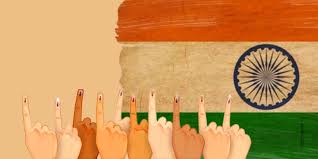
One of the most distinctive features of Indian politics is the immense influence wielded by regional parties. These parties, often with a strong base in a single state or a sub-region, articulate the aspirations of specific linguistic, cultural, or caste groups that feel underrepresented by the national parties. Their rise to prominence since the 1990s has fundamentally transformed India from a quasi-unitary system to a truly federal polity. Parties like the Dravida Munnetra Kazhagam (DMK) and All India Anna Dravida Munnetra Kazhagam (AIADMK) in Tamil Nadu, the Trinamool Congress (TMC) in West Bengal, the Telugu Desam Party (TDP) in Andhra Pradesh, and the Samajwadi Party (SP) and Bahujan Samaj Party (BSP) in Uttar Pradesh have, at various times, dictated the terms of national government formation and policy. This has ensured that the states’ voices are heard loud and clear in the corridors of power in New Delhi.
The power of regional parties stems from their deep connection with local issues and identities. They often champion causes like greater state autonomy, protection of regional language and culture, and a more equitable distribution of central resources. Their leaders are perceived as “sons of the soil,” who understand and can effectively address local concerns better than a distant national party. In the era of coalition Indian politics, these parties became “kingmakers,” their support crucial for any national alliance aiming to form a government. This allowed them to extract significant concessions for their states, including cabinet berths, special financial packages, and support for key regional projects. Even in the current era of BJP dominance, regional parties continue to control several important states, acting as a vital check on the power of the central government and upholding the federal principle.
The relationship between national and regional parties is a complex dance of cooperation and conflict in Indian politics. National parties often form alliances with regional parties during general elections to broaden their appeal. Conversely, regional parties fiercely resist the encroachment of national parties into their turf during state elections. This dynamic creates a multi-level party system where a party can be an ally at the centre and a rival in the states. The continued relevance of regional parties underscores the immense diversity of India and the limitations of a one-size-fits-all approach to governance. They are a testament to the fact that Indian politics is not a single narrative but a collection of multiple, powerful regional narratives that constantly interact with and shape the national story. Their resilience ensures that India’s federal democracy remains vibrant and responsive to its people’s varied aspirations.
The Ideological Battle: Secularism vs. Hindutva
At the heart of contemporary Indian politics lies a deep and often acrimonious ideological struggle between two contrasting visions of the nation: constitutional secularism and Hindutva (Hindu nationalism). This battle is not merely a political contest but a cultural and philosophical war over India’s identity and future. The secular vision, championed historically by the Indian National Congress and left-liberal parties, is enshrined in the Constitution’s preamble. It envisions India as a nation that does not privilege any religion and where all citizens, irrespective of their faith, have equal rights and status. This idea of a composite, pluralistic nation was the dominant consensus for much of India’s post-independence history and was seen as essential for managing its mind-boggling religious and cultural diversity.
The challenger to this consensus is the ideology of Hindutva, propagated by the Sangh Parivar and politically represented by the BJP. Hindutva, a term popularized by ideologue V.D. Savarkar, argues that India is a Hindu Rashtra (a Hindu nation) and that its national identity is inherently linked to its Hindu civilizational ethos. Proponents of this ideology argue that the secular model practiced in India was a form of “pseudo-secularism” that unfairly appeased minority communities, particularly Muslims, at the expense of the Hindu majority. The political project of Hindutva seeks to correct this perceived historical wrong and foster a unified Hindu identity that transcends caste and sectarian divisions. The demolition of the Babri Masjid in 1992, the anti-conversion laws in several states, and the debate on the Citizenship Amendment Act (CAA) are all flashpoints in this ongoing ideological battle within Indian politics.
This clash of ideologies permeates every aspect of Indian politics, from election campaigns and legislative debates to media discourse and public life. It influences policies on education, culture, and foreign policy. For supporters of Hindutva, it is a project of national rejuvenation and cultural reclamation. For its critics, it is a majoritarian project that threatens the rights of minorities and undermines the country’s secular and pluralistic fabric. The ascendancy of the BJP has given the Hindutva agenda a political momentum it never had before, leading to profound social and cultural changes. The outcome of this ideological contest will fundamentally determine the character of the Indian republic and remains the most significant and divisive fault line in Indian politics today.
The Critical Influence of Caste and Identity Politics
It is impossible to understand Indian politics without acknowledging the pervasive influence of caste. As one of the oldest and most complex social stratification systems in the world, caste has seamlessly integrated itself into the modern democratic process, shaping political allegiances, party formations, and government policies. While the Indian Constitution outlawed untouchability and sought to create a casteless society, Indian politics has, in many ways, empowered caste identities by making them a basis for political mobilization. Political parties actively court specific castes and sub-castes, calculating their electoral strategies around “vote banks.” This has led to the rise of powerful caste-based parties, such as the Bahujan Samaj Party (BSP) representing Dalits (formerly untouchables) and the Samajwadi Party (SP) with its strong base among Other Backward Classes (OBCs) in North India.
The Mandal Commission of the early 1990s was a watershed moment that irrevocably changed the landscape of Indian politics. The implementation of its recommendations, which provided 27% reservation in government jobs and educational institutions for OBCs, unleashed a powerful social and political awakening among the backward castes. It shattered the political dominance of upper castes and led to the emergence of a new class of OBC leaders who demanded their share of political power. This “Mandalization” of politics forced all parties, including the BJP and the Congress, to re-engineer their social coalitions and give greater representation to OBCs and Dalits. The politics of caste, therefore, is not just about identity; it is fundamentally about access to power, resources, and opportunities in a highly stratified society.
However, the dynamics of caste in Indian politics are not static. There are ongoing processes of caste consolidation and fragmentation. Parties like the BJP have skillfully navigated this complex terrain by building a broad “social coalition” that includes upper castes, sections of OBCs, and non-dominant Dalit groups, often under the umbrella of Hindu unity. Simultaneously, there is also a demand for a caste census to precisely quantify the population and socioeconomic status of different caste groups, which could lead to a further reconfiguration of political alliances. While some argue that the prominence of caste in politics empowers marginalized groups, others contend that it perpetuates divisive identities. Regardless of one’s perspective, the intricate interplay of caste and politics remains an undeniable and defining feature of the Indian politics ecosystem, ensuring that social justice remains a central and contentious theme in public discourse.
Economic Reforms and Their Political Consequences
The economic trajectory of India has been inextricably linked with its political choices. For the first four decades after independence, Indian politics was dominated by a socialist-inspired model, characterized by state control of key industries, protectionist trade policies, and an emphasis on import substitution. This “License Raj” system was a product of its time, reflecting a post-colonial desire for self-reliance. However, by the 1980s, the system began to show signs of strain, with low growth rates and fiscal crises. The profound economic crisis of 1991 served as a catalyst for a paradigm shift. Faced with a severe balance of payments problem, the government, led by Prime Minister P.V. Narasimha Rao and Finance Minister Manmohan Singh, initiated a series of sweeping economic reforms that liberalized the economy, opened it to foreign investment, and dismantled many controls of the License Raj.
These economic reforms had far-reaching consequences for Indian politics. They unleashed a new era of economic growth, created a burgeoning middle class, and integrated India into the global economy. The old political discourse centered on socialism and poverty alleviation was gradually supplemented, and in some quarters replaced, by a new narrative of aspiration, development, and globalization. The business community, which had often been viewed with suspicion, gained greater influence in policy-making. The reforms also altered the federal dynamics, as states began competing with each other to attract investment, making economic governance a key parameter for judging the performance of state governments. The slogan “Sabka Saath, Sabka Vikas” (Collective Efforts, Inclusive Growth) used by the current BJP government is a direct descendant of this post-reform political discourse, where economic performance has become a critical electoral issue.
However, the reform process has also been politically contentious. Critics argue that liberalization has led to rising inequality, agrarian distress, and jobless growth. The political backlash against reforms has often manifested in the form of populist policies, such as loan waivers for farmers and massive welfare schemes like the Mahatma Gandhi National Rural Employment Guarantee Act (MGNREGA). The tension between the demands for market-friendly reforms and the need for populist welfare measures is a constant feature of Indian politics. The political management of the economy—balancing growth with equity, managing inflation, and creating employment—is perhaps the most significant challenge for any government in New Delhi. The economic choices made by India’s leaders will continue to shape not only the country’s prosperity but also the very nature of its political contests.
The Future Trajectory of Indian Politics
The future of Indian politics appears to be at a critical juncture, shaped by a confluence of domestic aspirations and global uncertainties. The current trend suggests a consolidation of majoritarian politics under the leadership of the BJP, with the party aiming for a long-term ideological and political transformation of the country. The construction of the Ram Temple in Ayodhya, a core promise of the Hindutva movement, marks the culmination of one major agenda, and the focus may now shift to other contentious issues like a Uniform Civil Code. The opposition, led by a weakened Congress and a disparate collection of regional parties, is struggling to mount a coherent and unified challenge. The 2024 general elections will be a crucial test to see if the BJP’s dominance can be sustained or if a viable counter-coalition can emerge. The future of Indian politics will largely depend on the outcome of this electoral battle and the strategies employed by both the ruling party and the opposition.
Several key challenges will define the path ahead for Indian politics. First is the economy: the need to generate sufficient employment for a young population, address agrarian distress, and ensure that growth is inclusive and sustainable. Second is the management of social diversity: the rising majoritarian impulse is creating deep anxieties among religious and caste minorities, and the state’s ability to protect their rights and ensure social harmony will be critical. Third is the health of democratic institutions: the perceived erosion of the independence of institutions like the judiciary, the election commission, and the media is a matter of intense debate and could impact the quality of democracy. Finally, the role of technology, including the use of social media for political campaigning and the dangers of disinformation, will continue to evolve and influence the political process in unprecedented ways.
Despite these challenges, the resilience of Indian democracy should not be underestimated. The Indian electorate has repeatedly demonstrated its wisdom, throwing out governments that have failed to deliver and rewarding those that meet its aspirations. The vibrant media, an active civil society, and a fiercely independent judiciary have often acted as bulwarks against the overreach of executive power. The very diversity of India makes it resistant to any single, homogenizing narrative. The future of Indian politics is therefore unlikely to be a linear story. It will continue to be a dramatic, unpredictable, and vibrant saga of negotiation and conflict between competing ideas of India—as a Hindu nation, as a secular republic, as a federation of regions, and as a global economic power. This ongoing conversation, messy and contentious as it is, remains the greatest strength of Indian politics.

